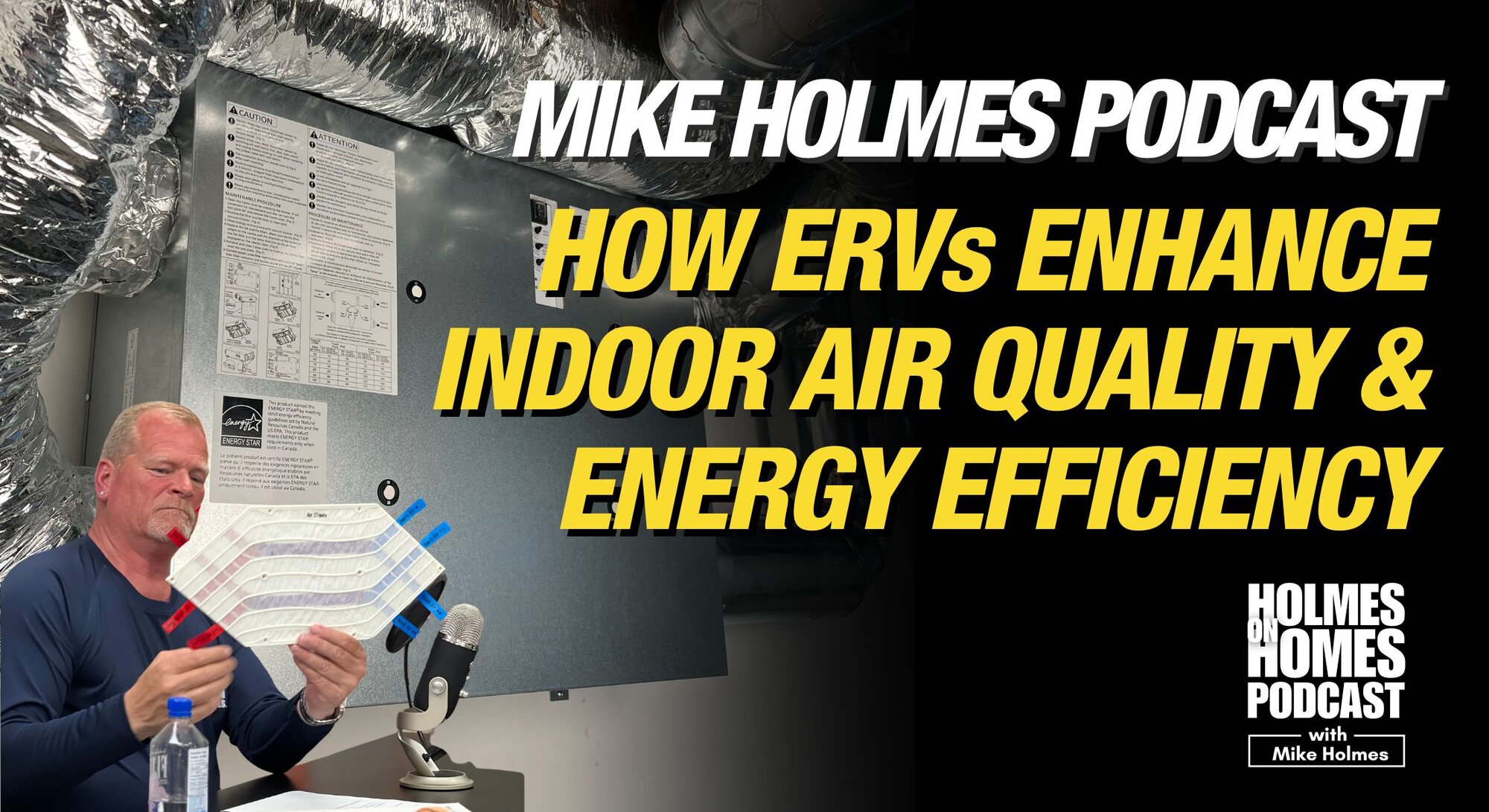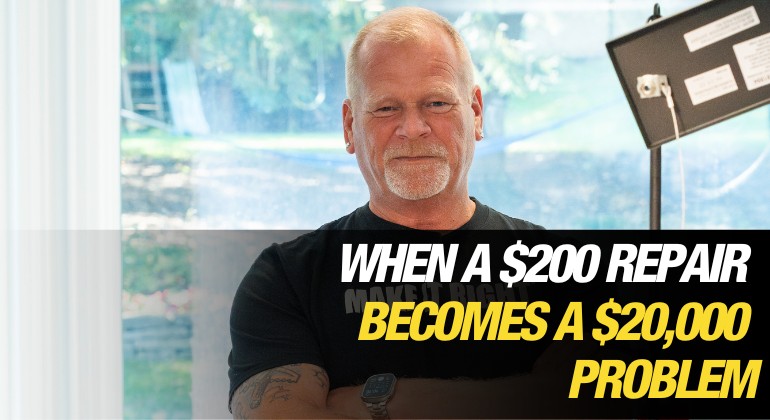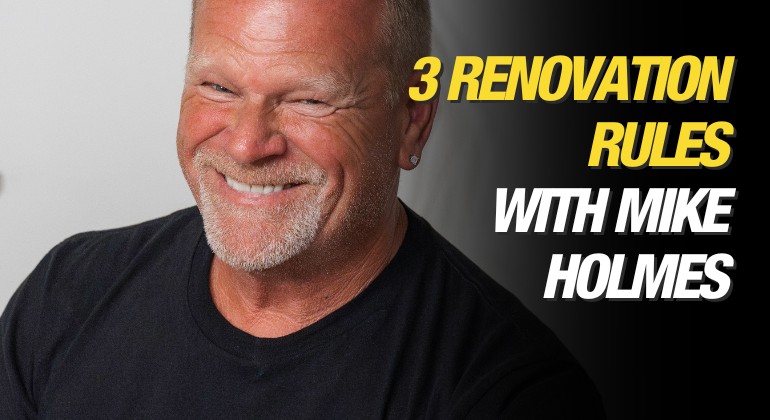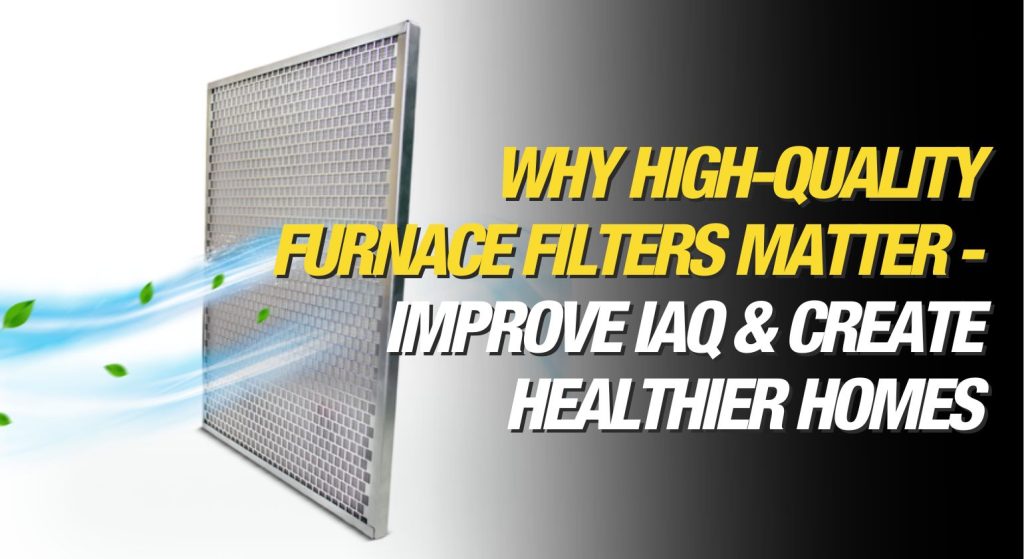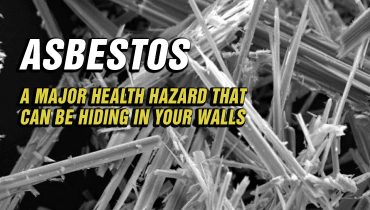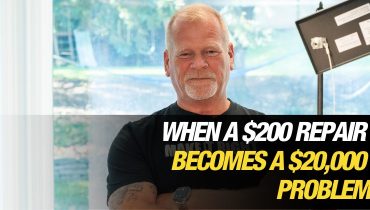When it comes to homes, water is enemy number one, and these 3 exterior home maintenance tasks will help prevent water damage. Water damage is one of the most costly...

Energy Recovery Ventilator (ERVs) For Your Home: Benefits
By Guest Post
Mike’s Advice / Holmes on Homes Podcast Expert Advice
Sunday, June 15th, 2025 @ 10:49am
Why ERVs Are A Great Investment in Today’s Airtight Homes
An Energy Recovery Ventilator (ERV) for your home is a smart solution for improving your indoor air quality and energy efficiency. ERVs exchange stale indoor air with fresh outdoor air while retaining heat and humidity levels. Unlike standard ventilation systems that simply bring in outside air, an ERV transfers heat and moisture between incoming and outgoing air, making it an ideal solution for maintaining comfort without wasting energy. An ERV is an excellent air exchanger for this reason.

We’ve installed many ERVs on our projects and I’ve learnt a lot over the years, speaking with HVAC specialists and Panasonic Indoor Air Quality experts.
If you’re renovating or building a new home, I recommend looking into getting an ERV, especially with today’s push toward energy-efficient, airtight construction. Here’s why.
Why Is Ventilation Important, Especially In Modern Homes?
Ventilation is essential for comfort and health. Without proper airflow, moisture, odours, and airborne pollutants can build up quickly, especially in newer homes that don’t have the same passive airflow older homes did.
Energy recovery ventilators (ERVs) in your home help to maintain indoor air quality by removing stale air and continuously introducing outdoor air. Unlike traditional exhaust fans that just push air out, ERVs manage both airflows simultaneously and recover energy in the process.
This matters more than ever in homes with:
- High insulation and air sealing
- Finished basements or multiple levels
- Occupants with allergies or asthma
- Pets or high indoor activity
“I know how I build things, and it’s so airtight that now I have to balance the air with this.” – Mike Holmes
What Is an ERV and How Does It Work?
An Energy Recovery Ventilator (ERV) is a mechanical ventilation system that replaces stale indoor air with fresh, filtered outdoor air while minimizing energy loss. It transfers both heat and moisture between outgoing and incoming air streams using a heat exchanger core, maintaining a more consistent indoor climate.
Here’s how it works across the seasons:
- Winter: The ERV retains heat and moisture from outgoing air, warming up the fresh air coming in, which reduces reliance on your heating system.
- Summer: It removes excess humidity and preconditions the incoming air to reduce strain on your air conditioner.
Unlike basic exhaust fans or open windows that vent air with no recovery, an ERV is energy-smart. It’s like breathing fresh air without your house catching a chill—or a sweat.
ERVs also integrate seamlessly with existing HVAC systems by working alongside your furnace, heat pump or air handler. They help reduce indoor air pollutants, excess humidity and energy waste, making your home healthier and more efficient.
Benefits of ERVs
Thinking about upgrading your HVAC system? Here are just a few reasons why an ERV is a smart investment:
- Brings in fresh air while reducing energy loss
- Improves indoor air quality by removing stale air
- Maintains balanced humidity levels year-round
- Reduces heating and cooling loads on your HVAC system
- Helps lower energy bills
- Supports a healthier, more comfortable home environment
Homeowners often notice immediate improvements in air quality after installing one, especially in homes with poor airflow or high humidity.
Smart Ventilation That Adapts to Your Home and Saves Energy
When it comes to building airtight, energy-efficient homes, ventilation isn’t optional—it’s essential. We’ve installed many Panasonic ERVs on our projects, and here’s why.
Their ability to deliver targeted, responsive airflow helps keep indoor air fresh, humidity balanced, and energy waste in check.
ERVs are rated by CFM (cubic feet per minute), a measure of how much air they move. A general rule of thumb is 30 CFM per 1,000 square feet of living space—but in real life, that number needs to adjust depending on what’s happening inside your home.
Panasonic’s ERVs use SmartFlow™ technology to automatically adjust ventilation based on those changing needs. You can manually select from multiple settings—20, 30, 40, or 50 CFM. And if you’ve got a full house or just finished cooking, the Boost function can temporarily increase airflow to 60 CFM.
Whether it’s excess humidity in the bathroom, lingering smells in the kitchen, or a spike in indoor activity, the system responds intelligently—delivering just the right amount of fresh air, exactly when it’s needed. You’re not just dumping air in or pulling it out—you’re controlling it. That’s smart.
This level of control and efficiency helps reduce strain on your HVAC system, manage indoor humidity, and maintain better air quality year-round, all without over-ventilating or driving up your energy bills.
BEST ERV for Small Spaces
For smaller homes, apartments, or specific rooms, the Panasonic WhisperComfort 60 offers an efficient, whisper-quiet solution. It’s a compact ERV that delivers balanced ventilation at 40–60 CFM and features Panasonic’s trusted SmartFlow™ technology—automatically adjusting airflow to match indoor conditions.
Designed with comfort and convenience in mind, the unit includes:
- Balanced airflow rates from 40–60 CFM
- Built-in motion and humidity sensors
- Capillary core for effective moisture transfer
- Ultra-quiet operation, ideal for compact living spaces or additions. I have one in my sunroom.
The WhisperComfort 60 is ENERGY STAR® certified and integrates seamlessly with Panasonic’s smart home ecosystem. It brings efficient, balanced ventilation to even the smallest spaces.
How to Maintain an Energy Recovery Ventilator (ERV)
Like any HVAC component, ERVs require regular maintenance to ensure peak performance:
- Check and clean filters every 3 months
- Inspect the core exchanger annually
- Clear exterior intake/exhaust vents
- Schedule professional servicing once a year
Neglecting maintenance can lead to airflow restrictions, reduced energy recovery, and indoor air contamination.
I’ve always said, if you’re going to build it tight, you’ve got to ventilate it right—and that’s exactly what an ERV helps you do. It brings in fresh air, controls humidity, and makes sure your HVAC system isn’t working overtime. We’ve used Panasonic ERVs on a lot of our projects for a reason—they’re reliable, efficient, and smart enough to adjust to your home’s needs.
If you’re building new or renovating, do it right the first time. Add ventilation that works with your home, not against it. You’ll feel the difference—and breathe easier for years to come.
*Disclaimer: I only recommend products I would use myself and all opinions expressed here are our own. This post may contain affiliate links.
Expert Home Renovation Tips, Industry Innovations and More on the Holmes on Homes Podcast with Mike Holmes
The Holmes on Homes podcast with Mike Holmes takes you inside the world of construction, renovations, and the skilled trades—breaking down what it really takes to build it right. But it’s also about the bigger mission: helping people live better, stay safer, and feel more confident about their homes. With expert guests, practical tips, and real-life stories, Mike brings clarity, honesty, and decades of experience to every episode—whether you’re swinging a hammer or just trying to understand the basics.
Holmes on Homes Podcast with Mike Holmes is available on all podcast streaming platforms, including Mike Holmes’ YouTube Channel as well as Apple Podcasts and Spotify.
About Mike Holmes
Mike Holmes is a respected contractor and television personality who is dedicated to providing homeowners with practical advice and solutions for building and maintaining safe, high-quality homes. Known for his TV shows like Holmes on Homes and Holmes Makes It Right, Mike’s expertise spans various aspects of home construction and renovation. A key area of his focus is HVAC (heating, ventilation, and air conditioning) systems, as he understands the critical role they play in creating comfortable, energy-efficient, and healthy living environments.
